Prior to the release of MED4, artifact-based decks were limited to Affinity-type builds in the Classic scene. With the release of Mishra’s Workshop in MED4, Workshop decks have comprised a significant portion of the Classic metagame. Workshop decks have several nicknames such as ‘Shop and MUD. I prefer MUD, a nomenclature given to the deck denoting the brown color of artifacts prior to the modern card frame redesign after 8th Edition. From here on, I’ll refer to all shop decks that are mono-”brown” as MUD.
There are two approaches to Classic MUD decks: Prison and Aggro. Each approach corresponds with a different decklist, though many cards can be found in both lists, due to their inherent power. Generally speaking, Prison versions of the deck attempt to lock the opponent out of the game while Aggro versions try to drop efficiently-costed beaters onto the battlefield as quickly as possible. In this way, the one card that was released last year that has revitalized MUD on the Vintage scene is Lodestone Golem. Before Lodestone Golem, MUD decks needed to resort to the inferior 4-drop Juggernaut. With Lodestone, now MUD decks have an efficient 5-power beater for 4 mana, and it helps lock the opponent out of the game by adding one to the cost of all non-artifact spells. Lodestone Golem is the perfect example of a hybrid Aggro/Prison card that should be a four-of in every Workshop deck.
Shop Aggro
|
| ||||||||
Shop Prison
|
| ||||||||
Before I discuss these two approaches (Prison and Aggro) in detail, I should discuss the mana base of Workshop decks in general, as this is what makes MUD decks viable. Mishra’s Workshop, Ancient Tomb, and City of Traitors are the engine that drives MUD decks. Most MUD lists will run all twelve, though no less than ten, of these lands. Without them, there would be no reliable means to cast the powerful artifacts that drive the deck. In addition to these powerful lands, MUD mana bases usually consist of a Tolarian Academy, a Strip mine, four Wastelands and a number of Ghost Quarters and/or Mishra’s Factorys. Complementing the mana base, you’ll often find Sol Ring, Mana Crypt, and Mana Vault to round out the artifact mana acceleration.
Prison-based MUD Decks
There are various avenues to explore for building a Prison MUD deck. The one consistent element among all Prison-based MUD decks are the thirteen “sphere effects”: Trinisphere (which is restricted), Sphere of Resistance, Thorn of Amethyst, and Lodestone Golem. Virtually all Prison-based decks will contain the full thirteen-card package of sphere effects. These cards represent the most efficient means of slowing down your opponent, as each of them can be cast on Turn 1 (though Lodestone needs help from other artifact acceleration).
Null Rod is a card that fits well into the Prison-based strategy since the current Classic format includes numerous artifacts that have activated abilities. Many decks use artifacts for acceleration, and blue-based decks use them as a win condition (i.e. Vault-Key). Time Vault is stopped in its tracks by Null Rod, making this card quite powerful across many different archetypes, including the MUD mirror match. Null Rod requires that you build your own deck such that you forego including artifacts that have activated abilities, which generally precludes you from accelerating into large artifacts in the very early turns with a card like Metalworker.
Chalice of the Void is another card that is a common option among MUD decks, but it is particularly powerful in a Prison deck. In Vintage, it is often acceptable to play Chalice for zero to prevent your opponent from playing his Moxen and Black Lotus, but that is not an issue in Classic. Therefore, the ideal use of Chalice in Classic is to play it with one or two counters (the exception is when playing against Lion’s Eye Diamond Storm decks, when it is preferable to cast Chalice for 0 mana). Chalice for 1 stops quite a few threatening cards, namely Natures claim, Spell Pierce, Steel Sabotage, Vampiric Tutor, Brainstorm, and discard effects like Duress and Thoughtseize, among others. Chalice for 2 stops Ancient Grudge, Hurkyl’s Recall, Mana Drain, and most of the threats from Fish decks.
Smokestack does not see much play in Classic, but is prevalent enough in Vintage that it has an entire deck named after is, Stax. Ol’ Smokey’s partner in crime, Tangle Wire, has not yet entered the Classic card pool and is probably the most significant reason why it’s not as popular as it is in Vintage. When Tangle Wire is finally released in Nemesis, I’m willing to bet that Smokestack will become a force in the Classic metagame. I for one am excited to see if the new card from M12, Sundial of the Infinite could be the shot in the arm that Smokestack needed to become a player in Classic. For those that do not know, the Sundial allows the pilot to manipulate the stack in a way that each turn the MUD player can put another Soot counter on Smokestack but avoid having to sacrifice their own permanents. To do this in the client, you need to click on the upkeep trigger of the sacrificing effect first, ensuring that the trigger to put a counter on Smokestack is put on the stack last (and thus that it will be resolved first). After that resolves, you then activate the Sundial to end your turn while the sacrifice trigger is still on the stack, and you pass each turn to your opponent while they repeatedly need to sacrifice their own permanents, locking them out of the game when combined with a sphere effect or two.
Other Prison strategies include the combo of Crucible of Worlds with the various strip effects of Strip Mine, Wasteland, and Ghost Quarter. Crucible is a powerful card in that it can be both proactive and reactive. Proactively, you can play a Wasteland (preferably Strip Mine) and destroy a land each turn by recurring the card from your graveyard. It also allows you to re-actively get back any lands that might have been destroyed themselves by your opponent’s strip effects. The fact that it also plays well with City of Traitors is an added bonus.
I want to take a minute to discuss one card that can also be found in MUD decks: Serum Powder. Decks built with Powders have acquired the term “Espresso” and are often found paired with Smokestack; hence the name “Espresso Stax.” Serum Powder helps to maintain consistency, like it does for other decks such as Dredge, with the goal being to find a Mishra’s Workshop and two to three (or more, if fortunate enough) lock pieces in the form of spheres, strip effects plus Crucible, and/or a Smokestack, etc. If you find that the lack of a draw engine in Workshop decks to be too inconsistent for your taste, try putting three or four Serum Powders in your deck. The main argument against Serum Powder is that it is a terrible topdeck in the mid-late game, but the idea is that by then you should have your opponent locked out.
How a Typical Match Plays Out for a MUD Prison Deck
MUD decks are fairly linear since they lack a draw engine, but there are many subtle decisions to be made during each match. The first decision comes down to mulligan strategy. With a Prison build, you want to look for a hand with at least two lands (at least one preferably a Mishra’s Workshop, but at least two lands that produce more than one mana) and two lock pieces. Any hand that can drop a Lodestone Golem on Turn 1 should be a keeper, especially on the play. Equally powerful is the Thorn of Amethyst-Turn 1-into-Lodestone Golem-Turn 2 hand. Another type of hand to look for would be a Workshop with a strip effect and Crucible of Worlds, where you would drop the strip effect on Turn 1 and follow that up with the Workshop and Crucible on Turn 2. That way you can start recurring the strip effect on Turn 3, having now removed two of your opponents lands from the battlefield. Possibly the best hand that a Prison build can ask for is Workshop and Trinisphere with one to two other lock pieces and an artifact creature. Turn 1 Trinisphere is very hard (though not impossible) for most decks to recover from, which is why it is restricted.
As for the plan once the game begins, the strategy is quite simple: drop as many sphere effects as fast as possible and grind the game out until you control the board with one or more creatures. Always remember: the goal is to deny your opponent as much mana as possible on each and every turn. If provided the choice on Turn 1 on the play between dropping a sphere or a Chalice of the Void, it’s often best to play the Chalice first, as it will completely stop the most likely play on your opponent’s turn, that being a 1-cost spell. Thus, Chalice of the Void is at its best being cast as early in the game as possible.
Aggro MUD Decks
With the release of Urza’s Destiny on MTGO earlier this year, explosive Aggro MUD decks became viable thanks to one card: Metalworker. Metalworker represents the fastest mana acceleration available to Workshop decks and will win a large percentage of games where it is dropped on Turn 1. Using Metalworker to drop a combination of spheres and/or creatures on Turn 2, especially on the play, often creates too much tempo advantage for many decks to recover from.
While many consider Metalworker-based decks to be Aggro, they are in fact a hybrid Prison/Aggro decks. Due to the power of sphere effects, Metalworker decks will often pack the full thirteen sphere effects and a playset of Chalices. Where the decks often differ is the number of creatures in the maindeck. An Aggro build will often contain anywhere between fourteen to twenty creatures, whereas the Prison decks are likely to top out around twelve.
Metalworker also allows MUD pilots to turn into a combo deck with Metalworker and Staff of Domination. With an active Metalworker and a Staff in play, all one needs is three artifacts in hand to generate infinite mana to gain infinite life, draw their entire deck, and tap all of the opponent’s creatures.
With regard to playability, Metalworker Aggro decks are very explosive, whereas Prison builds are more consistent. Late game, Metalworker is a pretty terrible topdeck, since 3-mana Squires generally don’t get the job done in Classic.
How a Typical Match Plays Out in an Aggro MUD Deck
With regard to mulligan strategy for Aggro builds, specifically with Metalworker, you want to look for hands with a Workshop, Metalworker, and as many threats as possible. As with Prison builds, Lodestone Golem represents your greatest threat. It’s also important not to keep a hand with too many lands. Four or five lands might look appealing with a Metalworker and a Steel Hellkite, but threat density is critical for Aggro builds. There is nothing worse than topdecking another land when you already have four or five in your opening grip. I’ve found that the ideal number is two lands with a Metalworker, or three lands without Metalworker and a number of spheres/creatures.
With a Workshop and Metalworker in hand, your goal is to drop both on Turn 1 and hope to untap unimpeded to explode on Turn 2 with a number of spheres and/or creatures. If you do not open with a Metalworker, or it is countered/destroyed, your game plan should become similar to a Prison build’s, hence the reason it is a hybrid deck as opposed to a pure aggro deck.
A Sub-primer on Artifact Creatures Found in Classic Workshop Decks
MUD decks allow for a great deal of customization, mainly in the form of creature choices. Here is a list of all the useful and common creatures found in successful MUD decks:
Lodestone Golem — This is the card that revitalized MUD in Vintage and should be in every Classic MUD deck as a four-of. An efficient 5/3 beater that adds to the cost of non-artifact spells makes this card the best creature in Classic MUD decks.
Duplicant — Nearly every MUD deck should find a spot for two or more Duplicants. Duplicant is effective as removal against Fish decks and in the mirror match, but it is especially potent against Oath decks. The fact that Duplicant permanently exiles the creature it targets cannot be dismissed, even if the Duplicant is later destroyed. It is also one of the few ways that MUD decks can deal with Emrakul, the Aeons Torn off of Oath of Druids, Show and Tell, or some other means.
Phyrexian Metamorph — The newest addition to MUD decks, Metamorph allows for much-needed flexibility and could be utilized in every MUD deck to copy sphere effects, creatures, and to legend-rule out opposing Emrakul, the Aeons Torn, Kataki, Wars Wage and Gaddock Teeg. The cost of 2 life is a small concession to make, and the card has excellent synergy with Tolarian Academy.
Platinum Angel — While the Angel doesn’t see much play currently, it still can lock up a game, as there is very little creature removal being played these days (though artifact removal might be at an all-time high). Unfortunately, her clock has been out-classed by the recent artifact creatures that cost less mana to play, such as…
Steel Hellkite — For 6 mana, this Engineered Explosives on legs represents one of the few removal options available to MUD decks. It is a beefy 5/5 flyer in a format where very few creatures with flying are being played (Trygon Predator being the most common; Emrakul hardly counts), it can often win the game once it attacks and is the single best answer to said Predators. Unfortunately, its disadvantage is that it needs to stay on the board for a full turn to get any benefit out of it, and a Null Rod neuters the dragon quite well.
Kuldotha Forgemaster — While I’m talking about creatures with abilities that refer to older cards, Forgemaster is a Tinker on legs. Forgemaster is a little slow and best-utilized in a Metalworker deck where you can dump a lot of artifacts on the board as quickly as possible, but if you can untap with Forgemaster, being able to tutor up any artifact necessary is very powerful. One nice ability the Forgemaster provides is in response to an Oathed-up creature at instant speed, it can search for Duplicant or possibly Phyrexian Metamorph to deal with whatever fatty enters the battlefield on the opponent’s side.
Sundering Titan — The titan is a powerful threat versus blue-based decks since it can single-handedly wipe out their entire mana base. Holding this card back from seeing universal play is its mana cost of 8, though it provides a compelling target for Forgemaster. The 7/10 body helps end the game shortly after decimating your opponent’s mana base.
Wurmcoil Engine — Wurmcoil is at its best in the mirror match, not because of its lifelink or deathtouch, which are valuable, but rather because it trades with a creature and leaves 6 points of power behind. It also has synergy with Foregmaster since sacrificing it to “Tinker” up another artifact still leaves you with 6 power on the board.
Razormane Masticore — Razormane is at its best beating down on Fish decks from the sideboard. In Fish decks, Qasali Pridemage and a 5/6 (or larger) Tarmogoyf are the only threats to worry about besides artifact removal spells. If you are looking for a solution against Fish decks, Razormane is perhaps the best solution available. It’s also quite valuable in the mirror match since Wurmcoil is generally the only creature able to tangle with Razormane and live to tell about it.
Myr Battlesphere — While the Battlesphere is better as a Tinker target in Blue decks, MUD decks can certainly find a home for the the “BattleBall”. Battersphere is great against opposing Jaces since bouncing the 4/7 body leaves behind four 1/1′s to bring down Jace. Battlesphere is another card that works well with Forgemaster because sacrificing the 1/1s is a lot easier to stomach than sacrificing some combination three spheres, creatures, or artifact accelerants.
Phyrexian Revoker — The Pithing Needle on legs has carved out a niche in MUD decks of late. While similar to Needle, it differs in one important way, it shuts off mana effects. With the amount of artifact acceleration in Classic, there are many targets for the Revoker, including: Sol Ring, Mana Crypt, Mana Vault, Lotus Petal Metalworker, Lion’s Eye Diamond, Qasali Pridemage, Noble Heirarch, Aether Vial, Time Vault, Voltaic Key, Grim Monolith, Planeswalkers, and many more! The fact that is has a 2/1 body is icing on the cake. Revoker also combines with Null Rod and is useful in decks that are looking for a Null Rod-like effect but have artifacts with activated abilities, including Metalworker decks.
Karn, Silver Golem — The old standby has found himself in MUD decks for a long time. While Karn is not at his best in Aggro versions of the deck, he is still the finisher of choice for Prison builds. Animating Smokestack, Crucibles, and Spheres to attack your opponent can quickly end the game after you’ve managed to lock it up. When and if the Power 9 find their way onto MTGO, Karn can also double as removal for opposing Moxen, though for now in Classic, we’ll have to settle for animating Mana Crypt, LED, and Lotus Petal.
Triskelion — Another old standby from a bygone era, Triskelion has had his day in the sun in MUD decks. Trike can still find value as a sideboard option versus Fish decks, but his best value currently is in Red Workshop decks with Goblin Welder to recur from the graveyard with a fresh set of counters. A side note: Trike and Karn can combo to take down opposing artifacts three mana cost or less by turning them into creatures and pinging them with Trike’s counters.
Precursor Golem — This Golem can provide a quick clock if uninterrupted. A huge 9 power for 5 mana is nothing to sneeze at, but it comes with a heavy downside. Its anti-synergy with Lodestone Golem can be devastating. Targeted artifact removal such as Ancient Grudge can wipe out both Golems and the two 3/3 Golem tokens for the low cost of 3 mana (and 2 mana if using flashback). Additionally, while Lightning Bolt is not heavily played in Classic, it can be a huge beating for a single mana (or 2 mana if Lodestone Golem is also on board).
Slash Panther — On the surface, Slash Panther does not look the part of a powerful artifact creature for MUD decks. Upon further examination, you’ll see that while not perfect in every MUD deck, the Panther has some important applications. What makes this lowly 4/2 relevant is haste. Coming out of nowhere, this card can surprise most opponents. The Panther is particularly adept at taking down Jace, the Mind Sculptor and Tezzeret the Seeker. It has the same clock as Lodestone, and Metamorph is even more powerful coming into play as a copy of the Panther. The Panther is a perfect fit in Aggro MUD decks, possibly making viable Aggro decks that do not run Metalworker.
A Sub-primer for Non-Creature Sideboard Cards to Combat Other Classic Decks
Another form of customization comes from sideboard choices. Here are the most common sideboard options for MUD decks:
Jesters Cap — The Cap is useful in combating Oath decks and even Storm decks. Striping your opponents’ decks of their Oath targets or their Tedrils of Agony neuters their respective decks to the point that they might not have any other way to win. The Cap is quite slow since it usually cannot be cast on Turn 1 without help from artifact accelerants, and Workshop itself can’t even activate its ability.
Eon Hub — At 5 mana, this can sometimes be a turn or two too slow, but it has a pretty powerful effect against Oath decks, as well as Hive Mind decks, should that become more popular in Classic. It also has a welcomed synergy with Mana Crypt and Razormane Masticore.
Leyline of Sanctity — Another card that could be a solution to Oath decks. It also has the ability to turn off targeted discard effects from your opponent. As with other Leylines, the downside is that you need to have this in your opening hand; otherwise it is a dead card when drawn.
Ensnaring Bridge — Yet another anti-Oath card (get the idea that Oath decks are MUD deck’s Kryptonite?). Bridge is best in decks that pack Duplicant and/or Phyrexian Metamorph to stall the game until you can find either card.
Spine of Ish Sah — Spine represents the only targeted enchantment and artifact removal for MUD decks. It’s mana hungry at a stout 7 mana (potentially more with sphere effects), but it is good at what it does. The Spine also has excellent synergy with Karn, Silver Golem and Forgemaster.
Pithing Needle — Phyrexian Revoker has pushed the Needle out of MUD decks for the most part, but there are some advantages to running the Needle. Needle can shut of Bazaar of Baghdad and opposing strip effects in the mirror match in addition to the non-mana effects that the Revoker can stop. The 1-mana difference to cast is not entirely irrelevant either.
Maze of Ith — With most Oath decks running Emrakul these days (as opposed to the Elephant oath builds), Maze of Ith has lost most of its luster. It’s still useful against Blightsteel Colossus, but its best use at the moment is perhaps stopping Trygon Predator.
The Tabernacle at Pendrell Vale — The Tabernacle is particularly useful in Prison builds to combat aggro decks, namely Fish. Its best strength lies in the fact that it is a land, so it cannot be countered and dodges artifact removal. It acts to further limit their mana resources, but does have the drawback of affecting your own creatures, namely Lodestone Golem. Note that it does not provide mana, so make sure you side out a nonland card. Additionally, as nice of an ability it would be to double up on the Tabernacle, it is legendary, so be sure not to play a second one by accident!
Graveyard Hate Package — MUD players have a particularly difficult time with graveyard-based decks, especially Prison builds. Since very few spells are cast by Dredge players, sphere effects are nearly useless. I’m an advocate of having at least six cards, preferably seven, to combat graveyard-based decks in all MUD decks. Leyline of the Void is a solid option for MUD decks, but is especially powerful in Espresso builds since you can dig for Leyline without sacrificing too many cards. Tormods Crypt remains the best option for most MUD decks as its 0-mana cost is not prohibitive, and Chalice at 1 or 2 won’t prevent you from casting it. Relic of Progenitus is unique in that it can double as card draw, something MUD decks completely lack.
Closing
MUD decks are quite powerful in the current Classic metagame. The format has become quite hostile to MUD decks, evinced by he fact that the amount of artifact hate other decks are packing these days is on par with hate for Dredge decks. Aside from two cards in Masques block, Tangle Wire and Rishadan Port, the archetype is a nearly identical port of it’s Vintage counterpart (minus the artifact acceleration of the Moxen and Black Lotus). There are also variations of Workshop decks that are not 100% artifacts, and splash colors to use cards like Goblin Welder, among others. I’ll discuss those in another article in the future, so as to keep this primer strictly for MUD decks.
I hope you enjoyed this primer, and if by chance there is anything that I may have missed, please let me know in the comment section. Also, vote in the poll below to let me know which deck you’d like me to cover two weeks from now in my next article. The MTGO Academy staff will be closing the poll in the evening of Saturday, July 23rd.
Which deck would you like enderfall to cover in his next installment of Unlocking the Vault?
- Green-White Hate (29%, 12 Votes)
- Jacerator (24%, 10 Votes)
- Hermit Druid Combo (15%, 6 Votes)
- 4-Color Fish (12%, 5 Votes)
- Dredge (12%, 5 Votes)
- Oath (5%, 2 Votes)
- LED Bob Tendrils (3%, 1 Votes)
Total Voters: 41

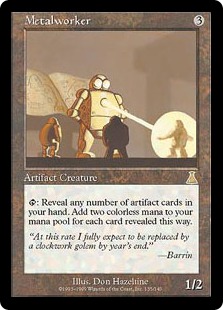
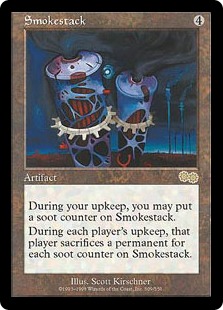

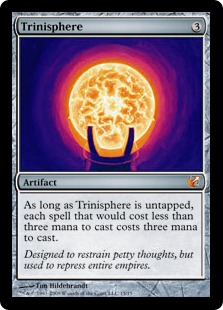
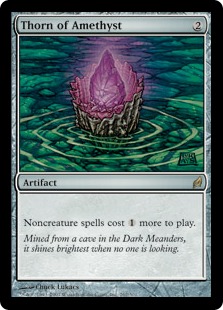
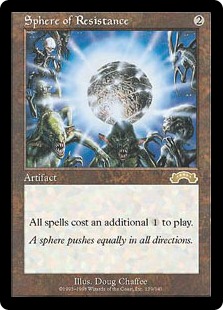
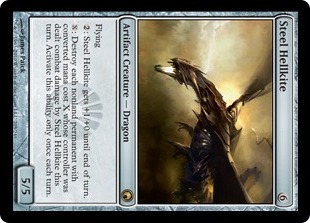

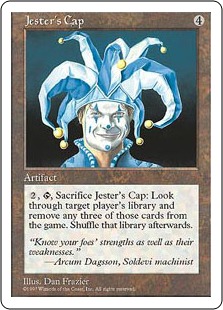
Excellent Article there Enderfall one of the best classic articles I have seen in a long time – I really like the series and look forward to the next deck-techs. I am super impressed that you picked up on Slash Panther (as this is so what still under the radar). In my mind you hit it spot on with the level of detail. Although it is not an option to vote on I would love to read a primer on Tezzerator strategies – A list recently went 4-0 in the DE – I guess a joint article on Classic Plansewalker (Ie JaceII and Tezz possible Tezz II) would be really sweet. Once again A star shop this is the first article series on this site to inspire me to bookmark the site and visit it.
Perhaps you can reference your clan affiliation somewhere too
Great article and resource. One thing you missed, and has been a little under the radar in Classic, is combo-Shop decks. You mentioned Forgemaster, but didn’t really get into how combo-Shops functions. I know, this deck hasn’t done much, but that has a lot to do with the limited amount of Classic we have seen.
Also, imho, Chalice for 0 shuts off a lot of Lotus Petals out there in quite a few match ups.
Lastly, I personally think Wurmcoil is the cat’s meow at the moment and ought to be a 4-of in all Shop decks. There is so much hate floating around vs. Shops that if I have a Wurmcoil or Hellkite, I would rather play the former, hands down. I am increasingly disenchanted with Hellkite in a non-Mox world. I find Wurmcoil also better than Duplicant who does nothing vs. Storm, not much vs. Oath (all gg at the moment), not much against Dredge, precious little vs. Tezzerator/Jacerator/Gush decks, and quite frankly, he’s too slow versus opposing 1st turn Metalworkers.
Hammer, which deck went 4-0 with Planeswalker control? I checked the archives on CQ and couldn’t find anything, but maybe I missed it. I will certainly consider a dual Jace/Tezz primer if Jacerator ends up winning.
MMogg, in my testing, Forgemaster is a little slow as in most cases it takes two full turns to reap his rewards (the exception being tutoring up the Vault Key combo, but that requires having on piece already in hand or in play). You need a commanding board presence in order for him to stick since he has a huge target on him before you can untap with him. Lightning Greaves would help in that regard, but then you are watering down your deck with equipment that has little value without the Forgemaster. My feeling is that if you have a commanding board presence then you shouldn’t be waiting a full turn to get some value of of a card when dropping Karn, or Precursor Golem (both sharing the 5 CC slot) offer up more immediate rewards.
I also agree with your Wurmcoil vs Hellkite discussion to some extent. Hellkite has evasion and that is something that can not be discounted, especially when playing Fish decks packing Trygon Predator and the mirror match. I typically use a split of Hellkite and Wurmcoil in my 75.
http://www.wizards.com/Magic/Digital/MagicOnlineTourn.aspx?x=mtg/digital/magiconline/tourn/2562967
4-0 tezzerator
Ah-ha. CQ doesn’t have the July DE’s up and you had not published the list on YSO. Thanks for the link.
I have secretly been buying classic decks. You can bet I was bummed when I realized the Homeward Path didn’t screw over oath–stupid ownership token update in m10!
I will read over this and tweak my shop decks :]
Enderfall – this site itself has an AWESOME decktech tool, with advanced search capabilities.
http://decks.mtgoacademy.com/AdvancedSearch.aspx
Classic is being implemented as a search format as we speak, but here a trick I learned: put classic in the Tournament Information Event Name box and you can narrow it down that way.
http://decks.mtgoacademy.com/advancedSearchResults.aspx?mode=mtgo&event=classic&mc=tez
Hope this helps!
Thanks in3d, as ashamed as I am to say it I had forgot about that useful tool.
Looks like the community has chosen G/W Hate. Look for that in my next primer!